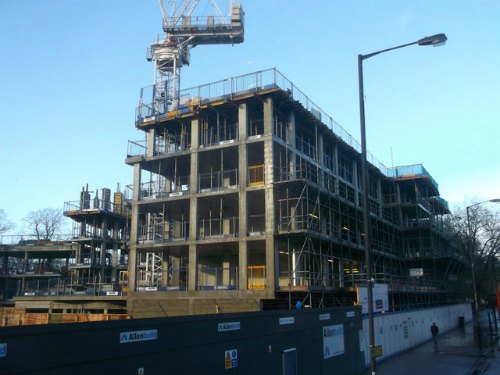Measurement and billing are the most important part of any commercial construction work. Mode of measurement should be settled before the execution of work or at the time of tendering. It is best to settle the mode of measurement as per the Central Government’s Civil Engg. Organisations like CPWD or at least as per State’s PWD norms where the actual site of work exists.
 Image Courtesy: David Anstiss via Geograph.org.uk
Image Courtesy: David Anstiss via Geograph.org.uk
Here we share everything that commercial construction contractors need to know about Measurement and Billing
1) Excavation and earth filling– It is measured and paid in CuM (Cubic Meter) for foundation and trenches.
BUT
Excavation over an area up to 150mm thickness for roads etc Where the surface area is more compared to depth are measured and paid in SqM (Square Meter).
2) Plain cement concrete up to 100mm thick in foundation and flooring are measured and paid in SqM
BUT
RCC slabs of 100mm thickness are measured and paid in CuM. You must insist to pay any concrete (PCC or RCC) up to 150mm thick in SqM only.
3) RCC in the foundation, raft, plinth beams, columns, lintels, floor beams and slabs of 150mm thickness or over are measured and paid in CuM.
4) Half brick wall with or without reinforcement or cement Block walls up to 150mm size are measured and paid in SqM BUT brickwork of 230mm or over are measured and paid in CuM.
5) Flooring and Tiles in flooring and walls are measured and paid in SqM.
BUT
Skirting up to 125mm height are measured and paid in RMt (Running Meter).
6) Pipes in plumbing and Sanitation work with specific diameter and material are measured and paid in RMt (Running Meter).
However, Bib cock, stop cock, flushing cistern, wash basin, WC pan and water meter are measured in Nos (Numbers).
7) Providing and fixing of wooden door frames or steel windows with predefined specifications are measured and paid in SqM.
BUT
Wooden frames in doors and windows with predefined specifications are measured and paid in CuM.
8i) Oil paintings of steel windows and grills are measured in a full area and payments are made for half area as per CPWD norms.
8ii) Oil paintings to wooden shutters are measured and paid in SqM
BUT
Panelled door and window shutters are paid with 30% extra for it’s excess area as per CPWD/State PWD norms.
9) Plastering and paintings of walls are measured and paid in SqM.
Deduction for doors, windows and any opening less than 3.00 SqM are measured only half of the area one side and no additions for jamb are considered and taken in account. Any deduction in plaster and paintings less than 0.50 SqM are not considered and are not taken in account.
Note: The external plaster of walls in areas like Mumbai where fine sand are not available, are done either by sea sand or coarse sand which involves more cement, sand and labour for the same thickness of plaster with same mix of cement mortar say CM 1:4.
CPWD allows 40% for such sand faced plastered surfaces. Painting to these surfaces is also paid at same 40% extra as per CPWD and State PWD norms.
Measurement of such surfaces must be made accordingly and billed accordingly. The surfaces must be made accordingly and billed accordingly.
10) Roughcast plastered and painted area shall be measured and billed accordingly as per the roughness of the plastered and painted area. CPWD and State PWD allows 100 to 200% extra for such surfaces.
Similarly, CPWD allows 30% extra for one side painting of Precast cement grills and corrugated sheets.
Please Note Commercial Construction Contractors: Cement consumption for many items in State PWD are on the higher side than it’s actual consumption in real. For example, Cement consumption of Random Rubble Masonry in CM 1:6 is 1.62 bag per CuM of masonry whereas in real it’s less than 1.20 bag per CuM as per it’s actual consumption in work.
Please note that if you are not a good Commission Payer then in that case departmental engineer can penalise you by giving you part rate of that item, or can settle the final rates at a too less price for substandard work for using less cement or worst he can reject the work on the plea that the work is not as per specifications and can not be accepted for payment. In that case, you have no alternative but to dismantle the whole work and do it again by putting 30% extra cement subject to you are allowed to use same dismantled stones..
If you do any extra work in the interest of construction project and quality or as per the instructions of the owner which is not in the estimates and tenders, then you have to bill it accordingly from the rates derived from the similar tendering items. And if it is not in the estimated tender then analyze it as per the current market rate for labour and material, and bill accordingly as per analyzed rate adding your margin of profits and all applicable taxes.
Lastly, if you are a commercial construction contractor, never accept less measurement and less payment in any circumstances.
Do Not Miss Reading:

